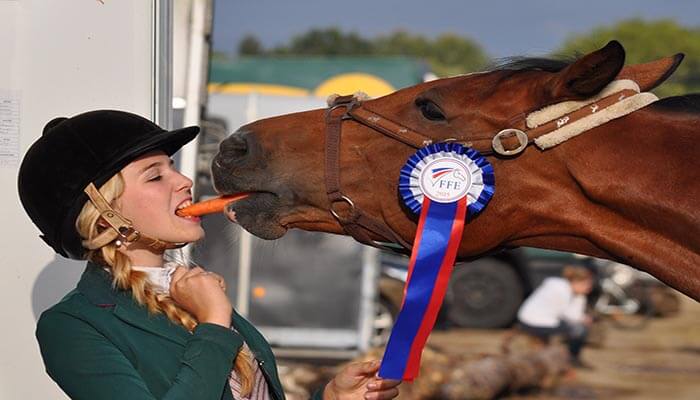Man has been known to use horses for racing since this specie was first domesticated. Historical evidence reveals that as early as 4500 BC, the nomadic people of Central Asia has already developed systems of horse racing. The Greeks are known to have incorporated horse racing into the Olympics since 638 BC.
Both chariot horse racing and mounted horse racing were popular during these ages. These later became an obsession among Romans when they adopted the sport.
For thousands of years, this type of sport was known to be performed only for the noblemen and royalties.
Modern racing is said to have started in the 12th century when the first breeding between Arabian and English horses was made. These were sparred by the return of the noble knights to the mother land after the Crusades. These are known to have produced sturdy horses with excellent speed. Thus, breeders maximized the potentiality of a racehorse and put them into tracks. This breed is the Thoroughbred that we know today which is still the most popular breed in the United Kingdom.
King Charles II was known to have held horse races in his private courses from 1660 to 1685.
By the 16th century, the English had been known to produce several racecourses. Queen Anne who founded the Ascot in 1711 is known to have made horse racing an official sport.
Halfway into the 1700s, the Jockey Club was created through the initiation of the elite figures involved in horse racing. This organization was the first legion of jockeys that established comprehensive rules and regulations including the standards as covered by the sports. Thus, they became the overseers of the sports and sanctioned horse racing events.
The Jockey Club was also the initiator for the regulation of breeding among horses. Thus, James Weatherby, an accountant of the Jockey Club during those times, traced back the family lines of all racing breeds in England. His research brought forth the publication of the General Stud Book, which was basically, the basis of authority in terms of the breeds that could be put to race. According to the General Stud Book, only those pedigrees that have descended from the line of the “foundations sires” are considered Thoroughbreds. The foundation sires are the: Byerley Turk, Darley Arabian and Godolphin Arabian.
Only in the 17th century did the sport arrive in America for which the very first racetrack was seen on Long Island. While it has become a favourite pastime among Americans, no one initiated the formalization of horse racing until after the Civil War. Because of the already-established obsession plus the industrial development, and widespread gambling on horse races, the sport grew largely by the year 1890 when 314 operating tracks are known to be in regular operation in the country.
Due to the lack of a governing body, this sport had become purely dominated by criminal elements. In 1894 though, the most prominent and high-ranking stable owners met and organized the American Jockey Club which was patterned on the sys as used by the Jockey Club in England.
Nowadays the sport has reached various countries across the globe. Governing bodies were also formed to regulate horse racing events.








Leave a Reply